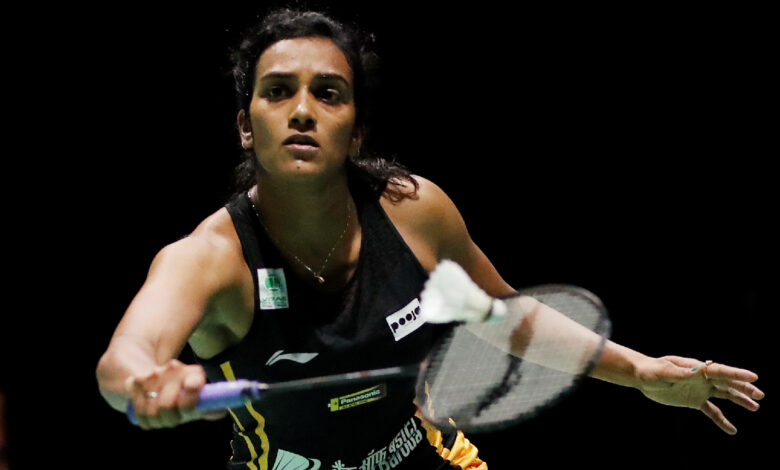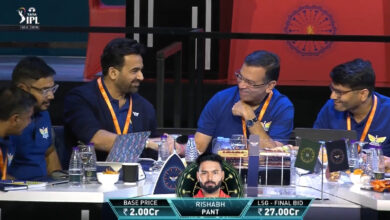Denmark Open badminton: PV Sindhu shows familiar failings as she loses to Indonesian Gregoria MariskaTunjung in quarters | Badminton News

A second-game revival did little to help PV Sindhu free herself from the silken web of Gregoria MariskaTunjung’s shotmaking, as the Indian lost her quarterfinal of the Denmark Open despite a mid-match defiance.Sindhu faded out 13-21, 21-16, 9-21 in 57 minutes in Odense against the Paris Olympics bronze medall, with most of the warts in her game repeatedly exposed under the glare of the Indonesian’s simple strategy of making the Indian tw and turn.
In the opener, playing from the relatively unhelpful side, it was Sindhu’s flank defence that Tunjung picked to drill holes, with the most basic of attacking plays for 16 minutes. The simplicity of Tunjung’s classical game is how she appears to sleep-walk through it, even while it’s solidly effective. She alternated Sindhu across and straight close to the sidelines, and threw in a variation of two straights or crosses once in a while.
The Indian’s side movements were not sharp to retrieve on opposing wings, and her reach comes to naught if she doesn’t anticipate and commit to the yo-yo-ing returns. Moreover, Sindhu kept lifting too short, and was wary to give the shuttle adequate height, with her line judgment wonky on the day. She needed to either go properly high or keep it flat and fast. Instead, she offered lollipops for Tunjung to play around with.
The Indonesian’s staple, however, is the round-the-head reverse drops, which she mixes with deft net hold-flicks, and for the majority of the match, Tunjung caught Sindhu on the net lunge with a meek backhand.
Yet, in the second game, Sindhu got into the fight with accelerated hand speed, moving faster around the court. She went up 6-1, but for the second consecutive day, lost 8 points in a row to trail 6-9.
Yet, her attacking was more proactive, and she was raining down shots, hassling Tunjung, to take a 11-10 lead. The statement rally of that middle game came at 12-11, when Sindhu took control of the rally, and went searching for empty spaces on court unleashing her variety at a fast clip, before finally sending a piercing flat deep smash. She took a 20-15 lead, and levelled the match.
But Sindhu’s game is still many paces off the absolute elite level. While her defensive lethargy and heavy-footedness may seem the obvious culprits, it was her unwillingness to snatch control of rallies, letting Tunjung dictate the pace. Sindhu believes in her power, but doesn’t quite back herself to out-think opponents over and over again, though she’s perfectly capable of it. So she lapsed into being dictated, and the decider was a no-contest after she trailed 8-2 and 15-6.
Chinks in the armour
Sindhu’s defence needs to get solid, because when she retrieves a dozen shuttles, opponents tend to start spraying it wide, going for lines too soon. Tunjung did too. But the Indian’s attack needs to be on point, with her controlling the steering wheel of every rally, because she needs to keep them snappy and short. When dragged into defensive drudgery, Sindhu stops believing that she can have the last word.
Sindhu’s defence needs to get solid, because when she retrieves a dozen shuttles, opponents tend to start spraying it wide, going for lines too soon. (AP Photo/Kin Cheung)
This loss may be seen as a step back for Sindhu, for she had played Tunjung five times in 2023, and beaten her on the last three, after two defeats. Their career head-to-head stands now at 10-3 in the Indian’s favour, and between 2015 and 2023, Sindhu had never lost to the upcoming Indonesian.
However Tunjung, ranked No 8 compared to Sindhu’s 18, is much stronger and sturdier in her game now. Being a deceptive player, flamboyance piggybacks her game, but she had often been guilty of not shoring up her defence or switching her rhythm in the past. But in the last one year, she has brought in an assured steadiness into her game, though opponents still find her wild to contend with when she indulges in her overhead trickery.
It will be a tough loss for Sindhu, because power couldn’t quite quell the Indonesian, and the old errors kept rearing their heads in the decider. It would have been An Se-Young next had Sindhu won, but she has a long way to go to get into these back-to-back rough inquisitions with her ranking dipping and draws getting tougher.
The downside of frequent coaching changes for Sindhu is that her new teams have to immediately come up to speed with the different playing styles of opponents and draw out plans, and hit the ground running. At times, it is reinventing the wheel. While opponent-specific planning will take a few attempts to get right, Sindhu will need to dip into her own memory, to negotiate typical tics of opponents known to her, especially in deciders.
Yet, Anup Sridhar and Lee Hyun-il have some immediate areas clearly visible needing work – the flank defence on either side. And slow starts, the creaking chugging of the wheels, being another.







